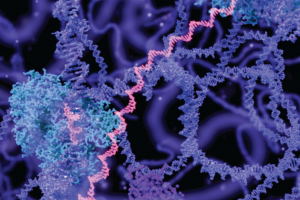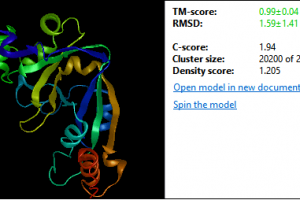Did you know that DNASTAR has been pioneering software solutions for life scientists since the early 1980’s?
Here’s a look back at some highlights from the last four decades in science and technology.
February 1, 1980
Fred Sanger, Wally Gilbert and Paul Berg share the Nobel Prize for Chemistry for pioneering DNA sequencing methods.
March 1, 1980
The World Health Organization (WHO) declares smallpox eradicated.
January 1, 1983
Polymerase chain reaction (PCR) is developed by surfing aficionado, Dr. Kary Mullis at the Cetus Corporation in CA, USA. Dr. Mullis goes on to win a Nobel Prize for this invention in 1993.
March 1, 1984
DNASTAR was founded in the E. coli lab of Dr. Fred Blattner, Professor of Genetics at the University of Wisconsin-Madison.
April 1, 1984
HIV is recognized as the cause of AIDS. By the end of 1984, there had been 7,699 AIDS cases and 3,665 AIDS deaths in the USA with 762 cases reported in Europe.
January 1, 1985
Alec Jeffreys coins the term “DNA fingerprinting,” which becomes the standard in criminal case work and paternity testing.
January 1, 1985
Release of the Macintosh 128k, the first mass-market personal computer to feature a GUI, built-in screen, and a mouse.
January 1, 1986
DNASTAR is trademarked and the company releases software for the “SeqEasy” sequencer digitizer.
January 1, 1988
EditSeq becomes DNASTAR’s sequence analysis application.
January 1, 1990
The Human Genome Project is launched, and the first gene therapy case takes place at the National Institutes of Health, who treated 4-year-old Ashanti DeSilva for a severe immune system deficiency.
January 1, 1994
FlavrSavr tomatoes are the first GMO food to be approved by the FDA.
January 1, 1995
The first bacterial genome is sequenced (Haemophilus influenza).
January 1, 1997
At the Roslin Institute in Scotland, Dolly the sheep becomes the first mammal to be cloned. This photo shows Dolly with Professor Sir Ian Wilmut, who led the research which produced her. (Photo courtesy of the Roslin Institute, University of Edinburgh, UK.)
Read moreJanuary 1, 1999
The Human Genome Project sequences their first human chromosome, Chromosome 22.
January 1, 2001
DNASTAR patents the de novo sequence assembly algorithms used in SeqMan Pro.
January 1, 2002
The mouse is the first mammal to have its entire genome sequenced.
January 1, 2004
DNASTAR launches the SeqBuilder molecular biology application. SeqBuilder was later replaced by its modern successor, SeqBuilder Pro.
January 1, 2006
The Protein Data Bank features nearly 40,000 atomic-resolution structures of proteins.
March 1, 2007
New DNA sequencing technologies increase DNA sequencing output 70-fold vs. the previous year.
January 1, 2011
DNASTAR launches the Protean 3D application for protein structure analysis and visualization.
January 1, 2013
The United States Supreme Court rules that naturally-occurring DNA cannot be patented.
January 1, 2014
Ebola epidemic infects nearly 30,000 and kills over 11,000.
January 1, 2018
The 100K genomes project is completed, sequencing 100,000 genomes from patients affected by cancer or rare diseases.
October 1, 2019
DNASTAR celebrates its 35th anniversary.
November 1, 2019
As of 2019, DNASTAR software had been cited in over 80,000 peer reviewed journals.
January 1, 2020
COVID pandemic begins and the genome of the SARS-CoV-2 virus is sequenced. DNASTAR provides over 1,000 free licenses of Lasergene to users around the world to allow them to perform sequence analysis at home during the pandemic.
Read moreFebruary 1, 2020
Support for Oxford Nanopore and PacBio long read sequence assembly is added to Lasergene Genomics.
March 1, 2021
The Protein Data Bank surpasses 175,000 atomic-resolution protein structures.




Leave a Reply
Your email is safe with us.